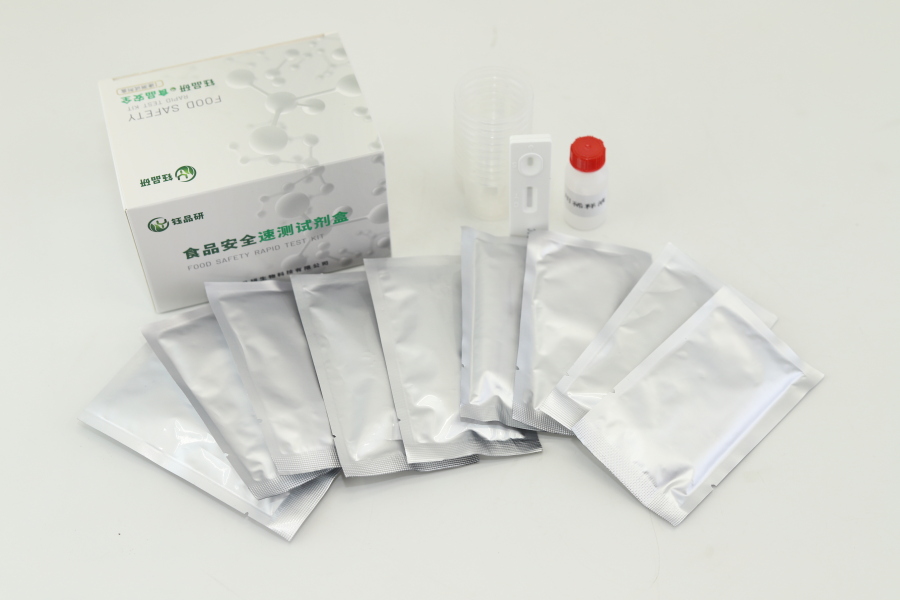With the rapid development of modern agriculture, pesticides play an important role in ensuring crop yield and preventing pests and diseases. Among them, permethrin pesticides are widely used in the planting process of vegetables, fruits, tea and other crops due to their characteristics of high efficiency, low toxicity and low residue. However, if used improperly or excessively, it may lead to excessive residues of permethrin in agricultural products, posing a potential threat to human health. Therefore, the rapid and accurate detection of permethrin residues in food has become an important part of food safety supervision.
In this context, the Permethrin Colloidal Gold Rapid Detection Card came into being. It is a rapid detection product based on colloidal gold immunochromatography technology, which is mainly used for qualitative or semi-quantitative detection of permethrin pesticide residues in foods (such as vegetables, fruits, aquatic products, etc.). The detection card realizes the rapid identification of the target in the sample by using the principle of specific binding of antigen and antibody, combined with the color-developing characteristics of colloidal gold particles.
Specifically, its detection principle is: the detection card contains specific antibodies labeled with colloidal gold. When the sample solution (such as pretreated food extract) drops into the detection card and the sample hole, it will flow along the test strip. If there are pyrethroid pesticide residues (ie antigens) in the sample, it will bind to the colloidal gold-labeled antibodies to form an "antigen-colloidal gold-labeled antibody" complex. When the composite logistics passes the detection line (T-line), if the antigen concentration in the sample is high enough, the complex will compete with the pre-coated antigen on the T-line to bind the antibody, resulting in T-line color development; if there is no antigen in the sample, the colloidal gold-labeled antibody will bind to the pre-coated antigen on the T-line to make the T-line color development. At the same time, the quality control line (C-line) will always develop color, which serves as a control for the effectiveness of the detection card. By observing the color development of the T-line and the C-line, it can be judged whether the sample contains pyrethroid residues.
As a rapid detection tool, the pyrethroid gold rapid detection card has significant First of all, the detection speed is fast, the entire detection process only takes 15-30 minutes, which can meet the needs of on-site rapid screening; secondly, the operation is simple, without the need for professional equipment and complex operation steps, ordinary personnel can get started after simple training; thirdly, the cost is low, and the cost of a single test is much lower than that of large instruments; in addition, the sensitivity is high, and the residual concentration at the ppb (parts per billion) level can be detected; finally, the portability is strong, the size is small, and it is easy to carry to the field, market, laboratory and other scenes.
At present, the test card has been widely used in many fields: food production enterprises can use it for raw material acceptance and quality control in the production process; agricultural and rural departments can be used for rapid screening of agricultural products for origin approval and market access; market regulators can conduct rapid investigation of key foods in daily supervision and sampling; third-party testing laboratories can also use it as a preliminary screening tool to improve detection efficiency.
In short, with its fast, accurate and convenient characteristics, the pyrethroid colloidal gold rapid test card plays an irreplaceable role in ensuring food safety, reducing the risk of pesticide residues, and improving regulatory efficiency. It is one of the important technical means in the field of food safety testing.


